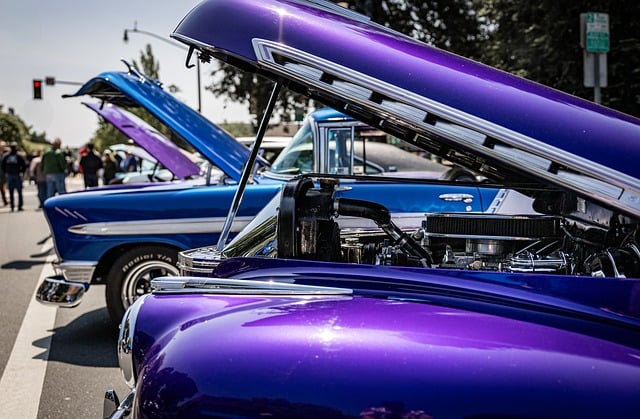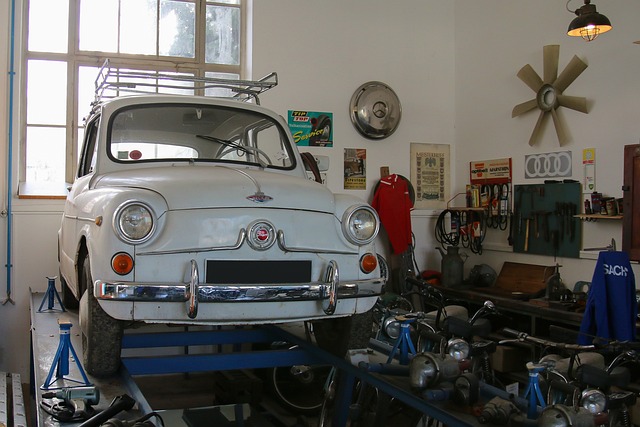Tesla Supercharger Compatibility: Strategies for Multi-User Vehicle Profiles
Tesla's Supercharger network prioritizes its own vehicle models like Model S, 3, X, and Y, with…….
Welcome to an in-depth exploration of a pivotal aspect of the electric vehicle (EV) revolution—Tesla Supercharger compatibility. As the world transitions towards sustainable transportation, understanding the intricacies of Supercharger technology and its compatibility with various Tesla models is crucial for both EV enthusiasts and industry stakeholders. This article aims to unravel the complexities of this system, highlighting its global impact, technological innovations, and the challenges it faces. By delving into these aspects, we will equip readers with a comprehensive knowledge base to navigate the evolving landscape of electric mobility.
Tesla Superchargers are a network of fast-charging stations designed specifically for Tesla vehicles, enabling them to recharge quickly, much faster than standard home or public charging options. Supercharger compatibility refers to the ability of a Tesla car to connect and draw power from these charging stations, ensuring efficient and rapid recharging during long-distance travel.
The core components include:
The concept of Supercharger compatibility emerged as a response to the unique challenges posed by long-distance EV travel. Early electric vehicles had limited ranges and slow charging times, making them impractical for highway travel. Tesla recognized this problem and developed the Supercharger network to address range anxiety and provide a seamless driving experience.
Its significance lies in several key aspects:
Tesla’s Supercharger network has expanded globally, covering numerous countries and regions since its inception in 2014. As of 2023, there are over 35,000 Supercharger stations worldwide, with a significant portion located in North America (over 18,000), followed by Europe and Asia-Pacific.
Top Countries by Supercharger Stations:
| Country | Number of Stations |
| ——- | —————— |
| United States | 15,000+ |
| China | 4,000+ |
| Germany | 2,500+ |
| UK | 1,800+ |
The global expansion of Tesla Superchargers has had a profound impact on local economies, creating new business opportunities and promoting sustainable transportation.
The Tesla Supercharger network has become a significant driver of the global electric vehicle market, influencing investment patterns and economic growth.
Tesla offers various pricing tiers for its Supercharger services:
The availability of Superchargers has played a pivotal role in Tesla’s dominance in the global EV market. According to IHS Markit, Tesla accounted for over 20% of global EV sales in 2022, with its Supercharger network being a key differentiator and convenience factor for consumers.
The field of fast charging technology has witnessed significant advancements, directly impacting the compatibility and performance of Tesla Superchargers.
Advances in battery technology have enhanced the overall performance of Tesla vehicles, including faster charging times and increased range:
The development and deployment of Tesla Superchargers are subject to various policies and regulations worldwide, which vary significantly from country to country.
Despite its many advantages, the Tesla Supercharger network faces technical challenges that require continuous improvement and innovation.
The Nordic region, consisting of Denmark, Norway, Sweden, and Finland, has embraced electric mobility with robust Supercharger networks. With a combination of generous government incentives, extensive public charging infrastructure, and supportive policies, these countries have achieved remarkable EV adoption rates. As a result, Tesla has established a strong presence, with hundreds of Supercharger stations across the region, catering to both locals and tourists.
The Netherlands is renowned for its forward-thinking approach to electric mobility. The country’s extensive network of Superchargers, coupled with a supportive regulatory environment, has led to a surge in EV sales. Dutch charging station operators offer competitive pricing and innovative services, such as mobile apps for real-time charger availability and booking systems, enhancing the overall user experience.
During the COVID-19 pandemic, Tesla introduced an innovative solution—the Supercharger Bus. This converted school bus features a large battery pack and provides free charging to passengers, encouraging public transport while offering a unique EV ownership experience. The concept has sparked interest in sustainable transportation solutions and inspired similar initiatives worldwide.
The future of Tesla Supercharger compatibility lies in continued global expansion, with a focus on emerging markets.
The technological front will continue to drive innovation in the following areas:
As the world prioritizes sustainability, Tesla Superchargers will play a pivotal role in reducing the environmental impact of electric vehicles:
Tesla Supercharger compatibility is a testament to human ingenuity and our relentless pursuit of sustainable transportation solutions. From its inception as a solution for range anxiety to becoming a global network, it has revolutionized the way we think about long-distance travel in electric vehicles. As technology continues to advance, and with growing global support, the future looks bright for Tesla Superchargers.
The article has provided an in-depth exploration of this topic, highlighting its impact on the EV industry, economic systems, and international relations. By addressing challenges and showcasing successful implementations, we can collectively work towards a more sustainable and connected world powered by electric mobility.
Q1: Are Tesla Superchargers compatible with all Tesla models?
A1: While most Tesla models are designed to be compatible, the specific connectors and charging speeds may vary. Newer models might use different port types, requiring adapters for older chargers.
Q2: How do I locate Tesla Supercharger stations?
A2: Tesla provides a user-friendly mobile app that allows owners to locate nearby Superchargers, check availability, and plan routes accordingly. The app also offers real-time updates on charging status.
Q3: Are there any costs associated with using Tesla Superchargers?
A3: Charging at Supercharger stations is generally free for Tesla owners, but some stations may have pay-per-use models or subscription plans for non-owners. Rates vary by location and operator.
Q4: How does the Supercharger network benefit local communities?
A4: The presence of Superchargers attracts EV buyers, increasing local tourism and supporting businesses like hotels, restaurants, and retail outlets. It also contributes to a more sustainable environment by reducing traffic congestion and lowering carbon emissions.
Q5: What role do governments play in Tesla Supercharger development?
A5: Governments provide incentives, subsidies, and regulatory frameworks that encourage the deployment of EV charging infrastructure, including Superchargers. They collaborate with private companies to ensure accessible and affordable charging solutions for citizens.

The Tesla Supercharger network, a global fast-charging network for EVs, uses its own charging protoc…….

Tesla Superchargers provide rapid charging for electric vehicles but their power output varies based…….

Optimizing Tesla Supercharger compatibility through tailored home charging solutions like Wall Conne…….

Tesla Supercharger compatibility is vital for electric vehicle (EV) owners in urban areas, offering…….

Tesla Supercharger compatibility is crucial for electric vehicle (EV) owners planning long-distance…….

Tesla Superchargers are exclusive rapid-charging stations for Tesla vehicles, requiring non-Tesla EV…….